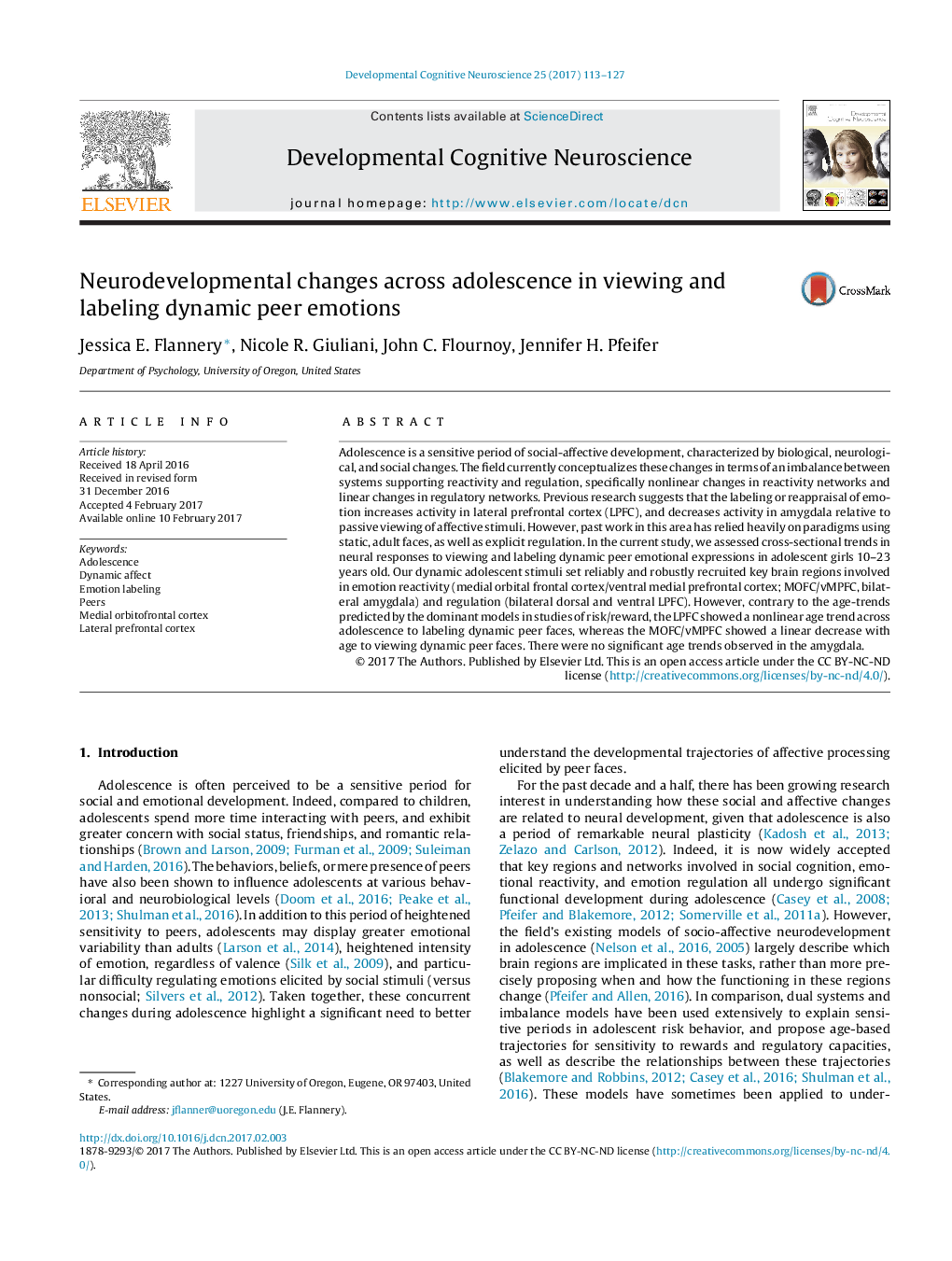| Article ID | Journal | Published Year | Pages | File Type |
|---|---|---|---|---|
| 5735870 | Developmental Cognitive Neuroscience | 2017 | 15 Pages |
â¢Dynamic peer facial stimuli recruit key regions involved in emotion processing.â¢LPFC shows a nonlinear age trend across adolescence to labeling dynamic peer faces.â¢MOFC/vMPFC shows a linear decrease with age to viewing dynamic peer faces.â¢No significant age trends were observed in amygdala during viewing or labeling dynamic peer faces.
Adolescence is a sensitive period of social-affective development, characterized by biological, neurological, and social changes. The field currently conceptualizes these changes in terms of an imbalance between systems supporting reactivity and regulation, specifically nonlinear changes in reactivity networks and linear changes in regulatory networks. Previous research suggests that the labeling or reappraisal of emotion increases activity in lateral prefrontal cortex (LPFC), and decreases activity in amygdala relative to passive viewing of affective stimuli. However, past work in this area has relied heavily on paradigms using static, adult faces, as well as explicit regulation. In the current study, we assessed cross-sectional trends in neural responses to viewing and labeling dynamic peer emotional expressions in adolescent girls 10-23 years old. Our dynamic adolescent stimuli set reliably and robustly recruited key brain regions involved in emotion reactivity (medial orbital frontal cortex/ventral medial prefrontal cortex; MOFC/vMPFC, bilateral amygdala) and regulation (bilateral dorsal and ventral LPFC). However, contrary to the age-trends predicted by the dominant models in studies of risk/reward, the LPFC showed a nonlinear age trend across adolescence to labeling dynamic peer faces, whereas the MOFC/vMPFC showed a linear decrease with age to viewing dynamic peer faces. There were no significant age trends observed in the amygdala.
